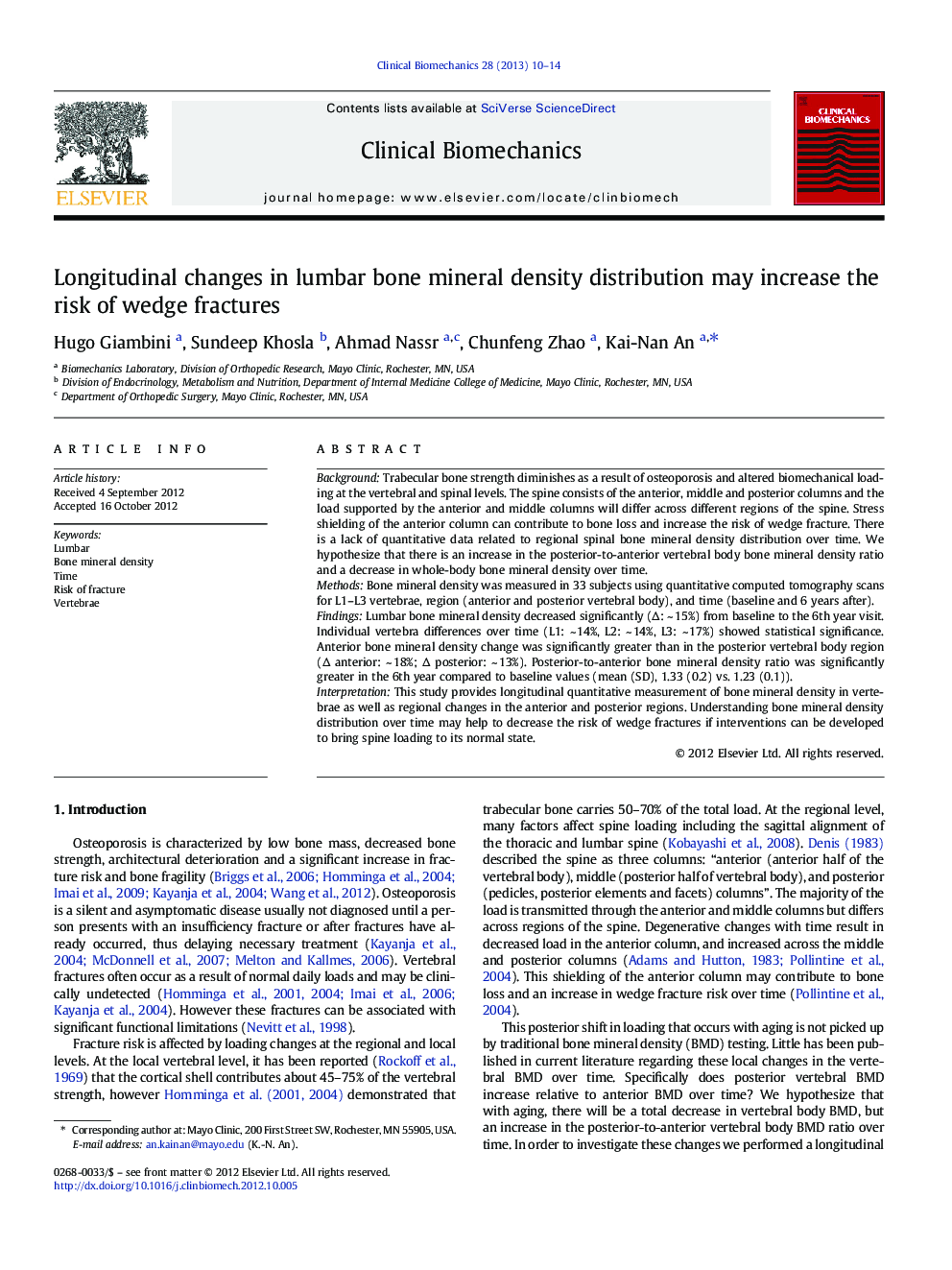| Article ID | Journal | Published Year | Pages | File Type |
|---|---|---|---|---|
| 4050385 | Clinical Biomechanics | 2013 | 5 Pages |
BackgroundTrabecular bone strength diminishes as a result of osteoporosis and altered biomechanical loading at the vertebral and spinal levels. The spine consists of the anterior, middle and posterior columns and the load supported by the anterior and middle columns will differ across different regions of the spine. Stress shielding of the anterior column can contribute to bone loss and increase the risk of wedge fracture. There is a lack of quantitative data related to regional spinal bone mineral density distribution over time. We hypothesize that there is an increase in the posterior-to-anterior vertebral body bone mineral density ratio and a decrease in whole-body bone mineral density over time.MethodsBone mineral density was measured in 33 subjects using quantitative computed tomography scans for L1–L3 vertebrae, region (anterior and posterior vertebral body), and time (baseline and 6 years after).FindingsLumbar bone mineral density decreased significantly (Δ: ~ 15%) from baseline to the 6th year visit. Individual vertebra differences over time (L1: ~ 14%, L2: ~ 14%, L3: ~ 17%) showed statistical significance. Anterior bone mineral density change was significantly greater than in the posterior vertebral body region (Δ anterior: ~ 18%; Δ posterior: ~ 13%). Posterior-to-anterior bone mineral density ratio was significantly greater in the 6th year compared to baseline values (mean (SD), 1.33 (0.2) vs. 1.23 (0.1)).InterpretationThis study provides longitudinal quantitative measurement of bone mineral density in vertebrae as well as regional changes in the anterior and posterior regions. Understanding bone mineral density distribution over time may help to decrease the risk of wedge fractures if interventions can be developed to bring spine loading to its normal state.
